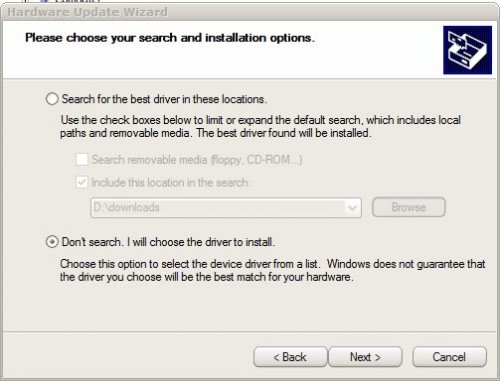Cfadisk Usb Driver X64
четверг 07 марта admin 61
Cfadisk-x64-1.zip - Google Drive.
After an afternoon of failures I have worked out how to flip the Removable Media Bit (RMB) on usb drives and SDHC cards under a 64 bit install of windows 7. This is based off the Hitatchi Microdrive trick, but I found a 64 bit compiled version of the driver on some german site. I did not make this driver I just found it. 64 bit Driver here Instructions Part A First you need to find the name of your USB or SDHC device run -> regedit -> navigate to: HKEY_LOCAL_MACHINE SYSTEM ControlSet001 Enum USBSTOR find the key that matches your device.
Right click on the key and click 'copy key name' My SDHC card plugged into a laptop card reader looks like 'USBSTORE Disk&Ven_Multiple&Prod_Card__Reader&Rev_1.00' Part B unzip the files above and open cfadisk.inf in notepad. Scroll down to the section [cfadisk_device] you will see the line%Microdrive_devdesc% = cfadisk_install,IDE DiskTS64GCF400______________________________20101008 delete everything after the comma so you are left with%Microdrive_devdesc% = cfadisk_install, paste your device string starting from USBSTOR *whatever* into the line just after the comma, no spaces. You should have something that looks like this%Microdrive_devdesc% = cfadisk_install,USBSTOR Disk&Ven_Multiple&Prod_Card__Reader&Rev_1.00 repeat this process for the section immediately below called [cfadisk_device.NTamd64] If you are so inclined you can name your device at the bottom of the file by editing the text in the quotes in the last line after it says Microdrive_devdesc = 'your device name here' save the file, you now have a functioning driver. Part C You now need to install the driver Open Device Manager, find your device and chose to update driver. Tell windows you want to choose your own driver.
Point it at your newly saved file. Windows will bitch and complain that the file is not signed, and not a compatible driver. Proceed anyways.
It is illegal for you to distribute copyrighted files without permission. The media files you download with aio.how must be for time shifting, personal, private, non commercial use only and remove the files after listening. Yeh rishta kya kah lata hai. Aio.how is not responsible for third party website content.
Once installed you should see the USB device show up as a 'Disk Drive' Reboot Note: When I rebooted the first time, windows would not load, this was due to the driver being unsigned. When booting hit F8 to enter the bootloader, and choose to disable driver signing. Alternatively you can disable driver signing by doing the following: run->cmd.exe Now type the following bcdedit.exe -set loadoptions DDISABLE_INTEGRITY_CHECKS press Enter: bcdedit.exe -set TESTSIGNING ON press Enter: When you reboot, you should find your USB or SDHC device listed as a fixed disk.
Aplikasi koperasi simpan pinjam xls reader. Software juga mampu mencetak transaksi simpanan ke kartu Simpanan Nasabah.
You can now partition, make it a dynamic disk, install picky programs that wont run on a removable disk etc.
The first sector of a partitioned disk is called the Master Boot Record (MBR). Near the end of this sector is the partition table which can contain up to four primary partition entries. One (and only one) of these table entries can be an Extended Partition entry. An Extended Partition entry points to another Extended Partition table which contains one or two entries (a logical partition entry and optionally another Extended Partition entry). In this way it is possible to have much more than four partitions on a drive. • One common solution to this problem is to set the USB Flash Drive (UFD) to be a 'Fixed Disk' by 'flipping the RMB bit' in the UFD controller using the Lexar BootIt.exe utility. However, this only works on certain UFD controllers (e.g.
